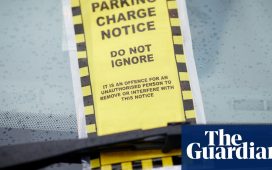The leafy countryside of Sussex is delightful to drive through, all twisting country lanes and glorious green fields for miles on end. I know because, sat in the passenger seat of a car and hunched over my laptop this past weekend, I had plenty of time to observe it.
While I should have been editing an essay during the 45-minute trip from a beautiful country cafe to the Weald & Downland Living Museum, I was instead spending most of it staring into the middle-distance and swearing under my breath. The 5G mobile internet I had tethered to my laptop kept cutting out with every languorous corner the car took, rendering my work impossible.
You might think that it’s an inevitable consequence of driving through rural parts of the UK. But it’s an issue not only confined to country lanes: you’re also likely to encounter patchy signal in built-up areas. The truth is that every city, town, village and hamlet is affected – albeit to differing degrees – by the same problem: Britain’s 5G connection is decidedly crap.
There’s no other way of putting it. A study conducted by the research firm Opensignal in 2023 found that UK mobile users had the worst average 5G download speeds of all G7 countries. And Japan and the UK are the only countries in that group to have seen performance drop year on year.
Not that you need to tell that to the Great British public. Poor network service is our biggest gripe with mobile phone companies, according to the consumer advocacy group Which?: 17% of mobile users report issues with network connections and signal. Little wonder, when, according to Ofcom, only 69% of rural areas in the UK receive 4G coverage (let alone superfast 5G) from the four major mobile network providers (BT/EE, Virgin Media O2, Three, Vodafone). Other countries are streets ahead. A recent report by the Social Market Foundation found that British users get access to 5G about 10% of the time, compared with more than 40% in India.
Why are we so data-poor? The obvious answer is a decision made by Boris Johnson’s government in July 2020 to uninstall all products made by Huawei, one of the world’s largest telecoms companies, from the country’s 5G network by 2027. At the same time, the government barred the purchase of any new Huawei connectivity kit from the end of 2020.
Cutting out the world’s best-known provider of 5G connectivity hardware was a bold decision – and arguably justified. There were fears raised, including by the UK’s National Cyber Security Centre, that its technology would be used for surveillance by the Chinese government. But its banning did have an impact on Britain’s connectivity by slowing the rollout of reliably fast 5G connections. Other providers such as Ericsson and Samsung have been forced to take up the slack, but it hasn’t been enough to plug the gap and build for the future.
But that isn’t the only explanation for a situation where buying your morning espresso in cities is touch and go because patchy 5G coverage is disrupting card transactions. Experts also say there is a lack of long-term investment: turning down Huawei made things worse, but government inaction had already left us struggling.
For 5G to work, there needs to be a planning system that allows for the building of mobile phone masts – and the requisite land on which to put them. A change in 2017 to how land was valued under the Digital Economy Act was meant to unlock access to it, but instead led to a rise in the number of disputes between landowners and those seeking to build, and an overall reduction in the amount of land supplied for infrastructure. At the same time, planning departments have rejected plans to put up masts that would bring 5G connections to the people in the few places where land could be accessed because of public opposition that labelled them an eyesore. Not to mention the case of the conspiracy theorists who threatened to bring down 5G masts because they viewed them as “enemy infrastructure”.
Investment has also been lacking. Advisers to the government estimated in 2022 that getting full 5G across the country by 2030 would require £37bn. Industry could foot about one-third of that bill, but would require the government to step in and pay the rest. They didn’t. And we’re left with the consequences.
My ability to tap away at the Google Doc I was working on in the car might seem of very little importance to you. But it is important to me, and it was important to the company waiting for it. We can joke about how the 5G revolution will do little more than enable us to load up memes faster. Indeed, the media, the government and the industry itself scoffed at the concept of what was sneeringly called “broadband communism” when Labour, in opposition in 2019, pledged to deliver free fibre optic broadband to all.
Yet the Social Market Foundation has highlighted how foolish such sneering is. By 2035, ubiquitous 5G could add £159bn to the UK economy – paying back the required investment many times over. It would help businesspeople quickly respond to emails wherever they are; encourage customers to return to shops where they had smooth payment transactions; and reduce congestion in our transport system by enabling the efficient rerouting of buses and cars with its faster flows of information. If 5G is speedy and reliable, it can do all that.
Times are tough, and while I don’t imagine Rachel Reeves cares all that much about whether I can get my work in on time, I know she does care about getting the country back on its feet. So she should diverge from her Tory predecessors: sometimes you have to speculate to accumulate.










